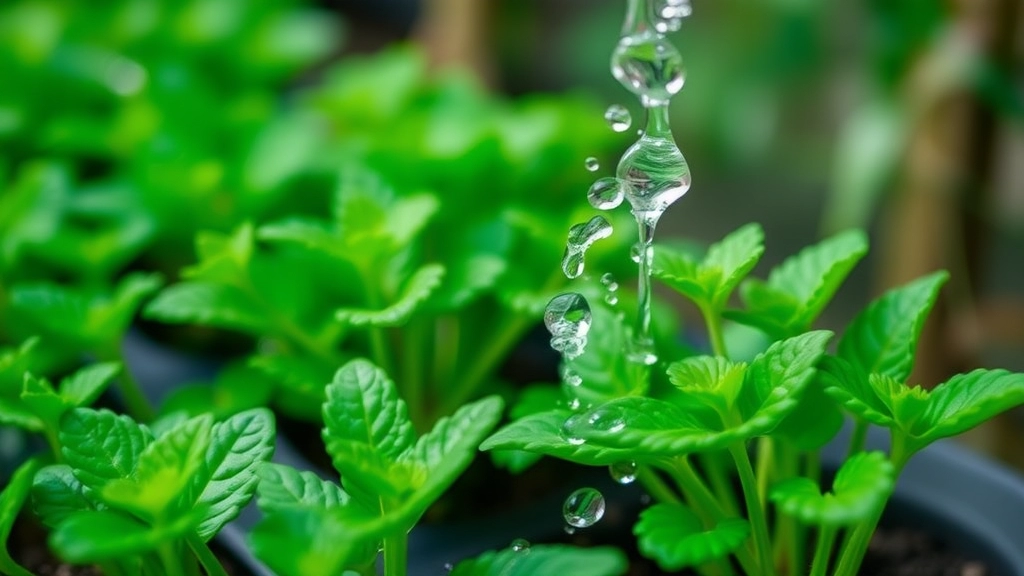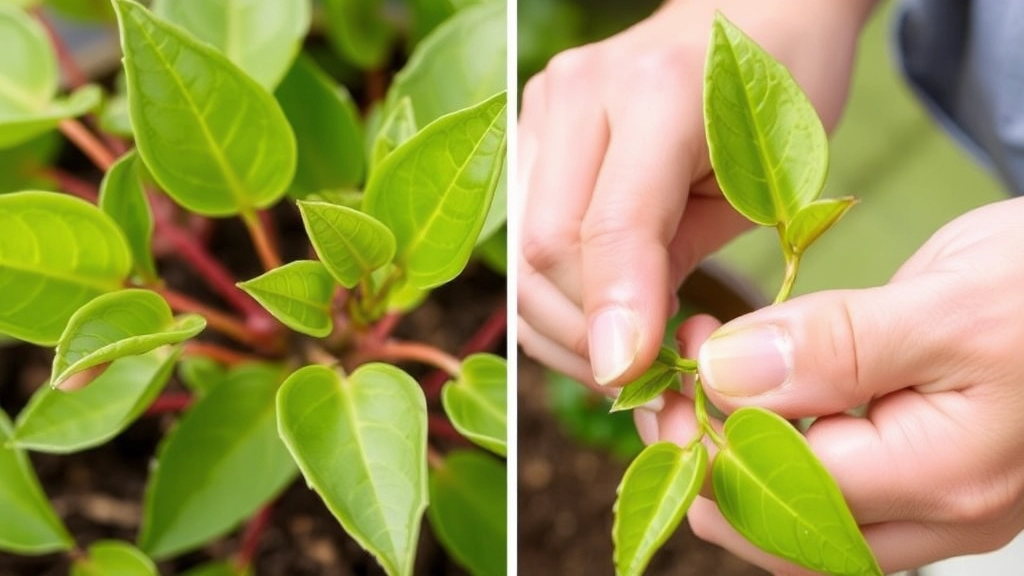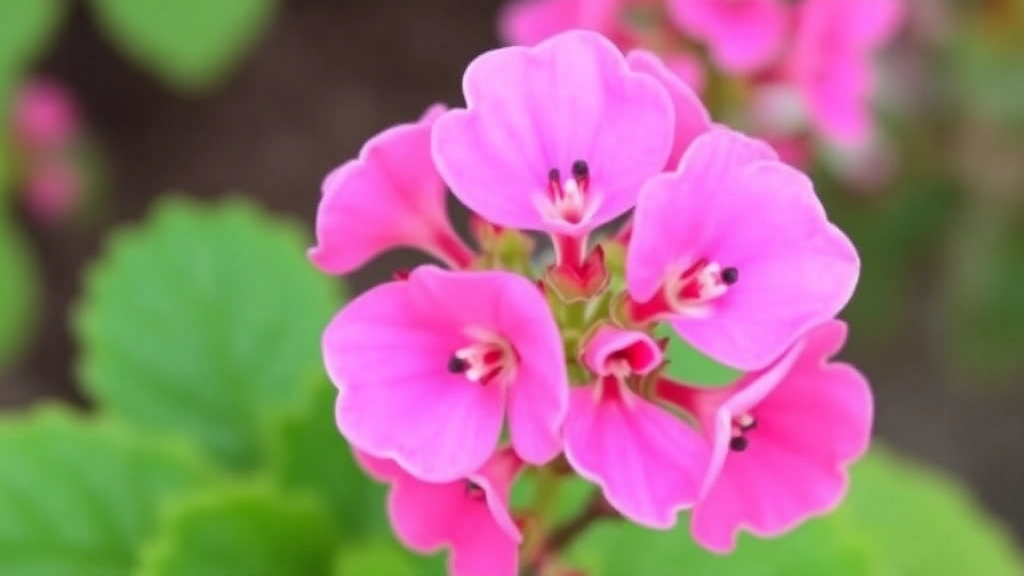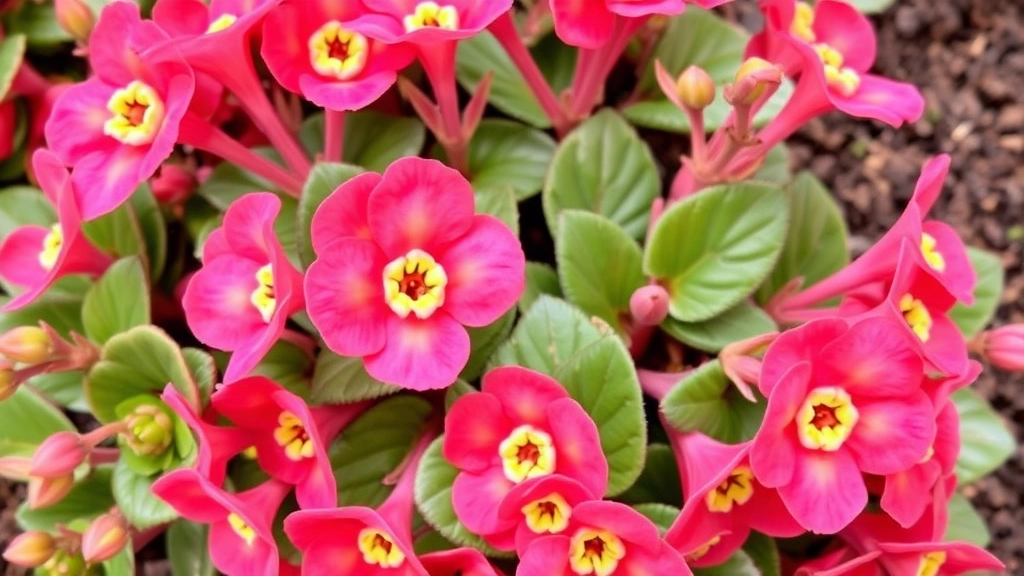Mastering the Care of Your Donkey Ear Kalanchoe
Looking to master the care of your Donkey Ear Kalanchoe? This unique plant, known scientifically as Kalanchoe gastonis-bonnieri, thrives with the right conditions. Let’s dive into the essentials of maintaining its health, from ideal growing conditions to effective watering techniques. By the end, you’ll know exactly how to keep your Donkey Ear Kalanchoe flourishing.
Understanding Light and Temperature Needs
Understanding the light and temperature needs is crucial for optimal growth. This plant loves bright, indirect sunlight and fares well in moderate temperatures. Pair this with the right soil and potting methods, and you’re on your way to a thriving garden addition.
What’s Next?
Stay tuned as we explore pruning tips, propagation methods, and solutions for common pests. Let’s get started with making your Donkey Ear Kalanchoe the star of your home garden.
When considering the growth of your Donkey Ear Kalanchoe, you may find yourself asking: What conditions will help my plant thrive?
Donkey Ear Kalanchoe, known for its distinctive, rounded leaves, flourishes best in specific environments. Here’s a breakdown of the ideal conditions to foster healthy growth:
### Light Requirements
– **Bright, Indirect Light**: This plant prefers bright, indirect sunlight. Too much direct sunlight can scorch its leaves.
– **Partial Shade**: If you live in a particularly hot climate, providing some shade during the hottest part of the day can be beneficial.
### Temperature Preferences
– **Warm Temperatures**: Ideally, keep your plant in temperatures ranging from 18°C to 24°C.
– **Avoid Frost**: Donkey Ear Kalanchoe is not frost-tolerant, so ensure it is protected from cold drafts or freezing temperatures.
### Humidity Levels
– **Low to Moderate Humidity**: This succulent thrives in low to moderate humidity levels, making it perfect for indoor environments.
### General Care Tips
– **Indoor vs. Outdoor**: If you choose to keep your plant indoors, ensure it’s near a window with plenty of light. Outdoors, a sheltered spot that receives filtered sunlight works wonders.
– **Seasonal Adjustments**: Be mindful of changing seasons. In winter, when light levels drop, you may need to adjust its position for optimal light exposure.
For more detailed care instructions, you might find our [complete care guide for Kalanchoe Beharensis Variegated](https://planthq.org/complete-care-guide-for-kalanchoe-beharensis-variegated/) helpful. Additionally, if you are curious about other succulent varieties, our [top Kalanchoe succulent varieties and care tips](https://planthq.org/top-kalanchoe-succulent-varieties-and-care-tips/) can provide more insights.
Watering Techniques for Healthy Growth

So, you’ve got your Donkey Ear Kalanchoe and you’re wondering how to keep it thriving, right? Watering is a key player in that game.
Understanding Water Needs
These plants are succulents, which means they store water in their leaves. So, overwatering is a common pitfall. You don’t want your plant to drown!
Here are some simple tips to nail your watering routine:
- Check the Soil: Stick your finger about an inch into the soil. If it feels dry, it’s time to water. If it’s still moist, hold off for a bit.
- Water Thoroughly: When you do water, give it a good soak until water drains out of the bottom of the pot. This ensures the roots get enough moisture.
- Frequency: In the growing season (spring and summer), you might water every 1-2 weeks. In the winter, cut back to once every 3-4 weeks.
- Use Room Temperature Water: Cold water can shock your plant.
Signs of Overwatering
Keep an eye out for these red flags:
- Yellowing leaves
- Mushy stems
- A foul smell from the soil
If you spot any of these, it might be time to adjust your watering game.
Light and Temperature Requirements
When growing Donkey Ear Kalanchoe, understanding its light and temperature needs is crucial for thriving plants.
Light Requirements:
- Bright, Indirect Light:
- Donkey Ear Kalanchoe flourishes best in bright, indirect sunlight.
- Too much direct sun can scorch the leaves, while too little light can hinder growth.
- Ideal Locations:
- A south or west-facing window is perfect for providing ample light.
- If natural light is limited, consider using grow lights to supplement.
- Signs of Improper Lighting:
- Yellowing leaves may indicate too much direct sunlight.
- Stretching or leggy growth often signals insufficient light.
Temperature Requirements:
- Optimal Temperature Range:
- This succulent prefers temperatures between 18°C and 24°C (65°F to 75°F).
- Avoiding Temperature Extremes:
- Sudden temperature drops or drafts can stress the plant.
- Ensure it’s kept away from cold windows in winter or air conditioning vents in summer.
- Winter Care:
- During colder months, maintain indoor temperatures above 10°C (50°F) to prevent damage. For more detailed winter care tips, you can refer to our post-flowering care guide.
For a comprehensive guide on how to care for and propagate Kalanchoe, check out our Flaming Katy care guide.
Best Soil Types and Potting Recommendations

When it comes to ensuring your Donkey Ear Kalanchoe thrives, the right soil and potting conditions are essential. Many plant enthusiasts often wonder, “What type of soil is best for my Donkey Ear?”
Soil Type Recommendations:
- Well-Draining Soil: Donkey Ear Kalanchoe prefers a potting mix that drains well. Look for a cactus or succulent mix, which typically contains ingredients like sand, perlite, or pumice.
- pH Level: Aim for a slightly acidic to neutral pH, around 6.0 to 7.0. This range supports healthy root development and nutrient absorption.
- Organic Matter: Incorporating some organic matter, like compost, can provide essential nutrients without retaining excess moisture.
Potting Recommendations:
- Pot Selection: Choose a pot with drainage holes to prevent water accumulation. Terracotta pots are a great option as they allow for air circulation and moisture evaporation.
- Size Matters: When potting your Donkey Ear, select a pot that’s only slightly larger than the root ball. This helps prevent overwatering, as smaller pots dry out quicker.
- Repotting: Consider repotting every couple of years or when the plant outgrows its container. This refreshes the soil and promotes healthy growth.
Pruning and Maintaining Donkey Ear Plants
When it comes to keeping your Donkey Ear Kalanchoe thriving, proper pruning and maintenance are essential. You might wonder, “How do I keep my plant healthy and looking its best?”
Why Prune?
Pruning helps to:
Propagation Methods: Leaf and Stem Cuttings

So, you’ve got your Donkey Ear Kalanchoe thriving, and now you’re wondering how to multiply that beauty?
Propagation is a fantastic way to expand your collection or share with friends.
Leaf Cuttings
This method is super straightforward and rewarding. Here’s how to do it:
- Select a Healthy Leaf: Choose a plump, healthy leaf from your plant.
- Cut the Leaf: Use a clean, sharp knife or scissors to snip it off at the base.
- Dry It Out: Let the leaf sit for a day or two to form a callus on the cut end. This helps prevent rot.
- Plant It: Place the callused end into well-draining soil. I prefer a cactus mix for this.
- Water Sparingly: Just a light misting to keep the soil slightly moist. No drowning!
Stem Cuttings
If you prefer a quicker route, stem cuttings can be your go-to:
- Choose a Stem: Look for a healthy stem with a few leaves.
- Cut the Stem: Make a clean cut just below a leaf node.
- Let It Callus: Just like with leaf cuttings, allow it to dry for a day or two.
- Plant It: Stick the cut end into your soil mix.
- Water Lightly: Give it a gentle water to settle it in.
Tips for Success
- Humidity: A mini greenhouse effect can help. Consider covering your cuttings with a plastic bag or placing them in a warm, humid spot.
- Patience: It may take a few weeks for roots to develop, so hang tight!
As we delve deeper into caring for your Donkey Ear Kalanchoe, it’s essential to address a common concern among plant enthusiasts: pests.
You might be wondering, “What pests could harm my beloved Kalanchoe, and how can I deal with them?”
### Common Pests
Here are the most frequent pests you may encounter:
– **Mealybugs**: These small, white, cotton-like pests often hide in the leaf joints. They suck sap, weakening your plant.
– **Aphids**: Tiny and green, they cluster on new growth. They can distort leaves and stunt growth.
– **Spider Mites**: These minuscule pests can create fine webs and thrive in dry conditions. They cause stippling on leaves.
– **Scale Insects**: These appear as small brown bumps on stems and leaves, sucking the plant’s juices.
### Treatment Methods
To keep your Donkey Ear Kalanchoe thriving, consider these effective treatment strategies:
– **Manual Removal**: For mealybugs and scale, wipe them off with a cotton swab dipped in rubbing alcohol.
– **Insecticidal Soap**: Spray this on affected areas to eliminate pests without harming the plant.
– **Neem Oil**: A natural pesticide that disrupts the life cycle of pests. Dilute it according to instructions and apply weekly.
– **Regular Inspections**: Check your plants weekly to catch infestations early.
### Prevention Tips
To reduce the risk of pest infestations:
– **Maintain Good Air Circulation**: Ensure your Kalanchoe is not overcrowded with other plants.
– **Avoid Overwatering**: Excess moisture can attract pests.
– **Quarantine New Plants**: Keep new additions separate for a few weeks to prevent introducing pests.
By staying vigilant and proactive, you can protect your Donkey Ear Kalanchoe from unwanted invaders. For more detailed care tips, you might find our [complete care guide for Kalanchoe Daigremontiana](https://planthq.org/complete-care-guide-for-kalanchoe-daigremontiana-pink-butterflies/) particularly useful. Additionally, understanding the [causes and solutions for Kalanchoe leaf problems](https://planthq.org/kalanchoe-leaf-problems-causes-solutions-and-prevention/) can help you maintain a healthy plant.
Seasonal Care Tips for Donkey Ear Kalanchoe

So, you’ve got your Donkey Ear Kalanchoe thriving, but how do you keep it looking fabulous all year round? Seasonal care is key to ensuring your succulent stays healthy and vibrant.
Spring: Time to Shine
As the days get longer and warmer, it’s the perfect time to give your plant some extra love.
- Repotting: If your plant’s outgrown its pot, now’s the time to repot. Choose a slightly larger pot with good drainage.
- Fertilising: Start feeding with a balanced succulent fertiliser every 4-6 weeks.
- Watering: Increase your watering frequency as the plant wakes up from its winter slumber.
Summer: Keep it Cool
Summer can be a bit harsh, but your Kalanchoe can handle it with the right care.
- Shade: If it’s too sunny, provide some afternoon shade to prevent leaf burn.
- Watering: Be mindful of watering. Let the soil dry out completely between waterings to avoid root rot.
- Pest Check: Keep an eye out for pests like mealybugs and aphids. A quick spray with insecticidal soap can do wonders.
Autumn: Preparing for Rest
As temperatures drop, your plant will start preparing for dormancy.
- Reduce Watering: Cut back on watering as the plant needs less moisture.
- Fertiliser: Stop fertilising to give it a break.
- Pruning: Trim any dead or damaged leaves to keep it looking tidy.
Winter: Minimal Care
Winter is a time for rest, but that doesn’t mean neglect!
- Light: Ensure your plant gets enough light. A south-facing window is ideal.
- Water Sparingly: Water only when the soil is completely dry. Overwatering in winter is a common mistake.
- Temperature Checks: Keep it away from drafts and heaters. Ideal temperatures are between 10-15°C.
After understanding how to care for your Donkey Ear Kalanchoe, you might wonder about its benefits and uses in your home garden.
### Aesthetic Appeal
One of the primary reasons to grow Donkey Ear Kalanchoe is its striking appearance.
– **Unique Leaf Structure**: The thick, fleshy leaves add texture and interest.
– **Vibrant Flowers**: When in bloom, the clusters of small, tubular flowers can brighten up any space.
### Low Maintenance
This succulent is perfect for those who may not have a green thumb.
– **Drought Tolerant**: Requires minimal watering, making it ideal for busy lifestyles.
– **Resilient**: Can thrive in various conditions, adapting well to neglect.
### Air Purification
Like many succulents, Donkey Ear Kalanchoe has air-purifying properties.
– **Improves Indoor Air Quality**: Helps remove toxins from the air, promoting a healthier living environment.
### Versatile Uses
Beyond its beauty, this plant has practical uses in your home garden.
– **Container Gardening**: Perfect for pots, allowing for versatility in placement.
– **Rock Gardens**: Adds charm and structure to rockeries or dry landscapes.
– **Indoor Displays**: Brightens up windowsills and desks with minimal effort.
### Educational Opportunities
Growing Donkey Ear Kalanchoe can also be a fun learning experience, especially for children.
– **Understanding Succulents**: Teaches about plant care and the importance of water conservation.
– **Hands-On Gardening**: Encourages responsibility and nurturing skills.
FAQs About Donkey Ear Kalanchoe
What is the best way to water my Donkey Ear Kalanchoe?
Donkey Ear Kalanchoe is a succulent, so it stores water in its leaves. To avoid overwatering, check the soil moisture by sticking your finger about an inch deep. Water thoroughly until it drains out of the pot’s bottom, but allow the soil to dry out between waterings. Use room temperature water to avoid shocking the plant.
How often should I water my Donkey Ear Kalanchoe?
During the growing season (spring and summer), water every 1-2 weeks. In the winter, when the plant is dormant, reduce watering to once every 3-4 weeks.
What type of soil is best for Donkey Ear Kalanchoe?
Donkey Ear Kalanchoe thrives in well-draining soil. A cactus or succulent mix containing sand, perlite, or pumice is ideal. Aim for a slightly acidic to neutral pH between 6.0 and 7.0.
What kind of pot should I use for my Donkey Ear Kalanchoe?
Choose a pot with drainage holes to prevent water accumulation. Terracotta pots are excellent as they allow for air circulation and moisture evaporation. Select a pot that is only slightly larger than the root ball to prevent overwatering.
How do I propagate my Donkey Ear Kalanchoe?
Propagation can be done through leaf or stem cuttings. For leaf cuttings, select a healthy leaf, let it callus for a day or two, then plant it in well-draining soil. For stem cuttings, choose a healthy stem, let it callus, and then plant it. Water both types of cuttings sparingly.
What are the signs of overwatering my Donkey Ear Kalanchoe?
Signs of overwatering include yellowing leaves, mushy stems, and a foul smell from the soil. If you notice any of these signs, adjust your watering routine accordingly.
How should I care for my Donkey Ear Kalanchoe during different seasons?
Seasonal care is important for maintaining a healthy Donkey Ear Kalanchoe:
- Spring: Repot if necessary, start fertilising, and increase watering frequency.
- Summer: Provide afternoon shade, let the soil dry out between waterings, and check for pests.
- Autumn: Reduce watering, stop fertilising, and prune dead or damaged leaves.
- Winter: Ensure adequate light, water sparingly, and keep the plant away from drafts and heaters.
How often should I repot my Donkey Ear Kalanchoe?
Repot your Donkey Ear Kalanchoe every couple of years or when it outgrows its container. This helps refresh the soil and promotes healthy growth.
Can I use cold water to water my Donkey Ear Kalanchoe?
No, it’s best to use room temperature water. Cold water can shock the plant and potentially harm it.
What should I do if my Donkey Ear Kalanchoe has pests?
If you notice pests like mealybugs or aphids, a quick spray with insecticidal soap can help. Regularly check your plant for pests, especially during the summer months.
References
-
Kalanchoe Plant Care – How To Grow A Kalanchoe
-
Kalanchoe Plant Profile
-
Kalanchoe: How to Grow and Care for Kalanchoe Plants
